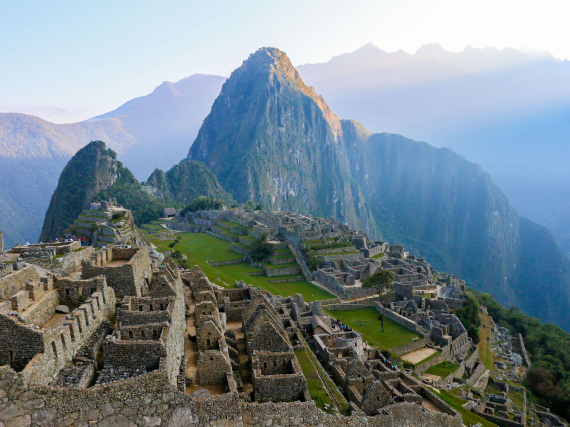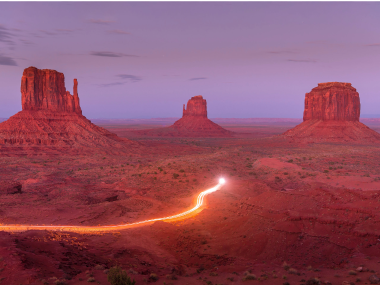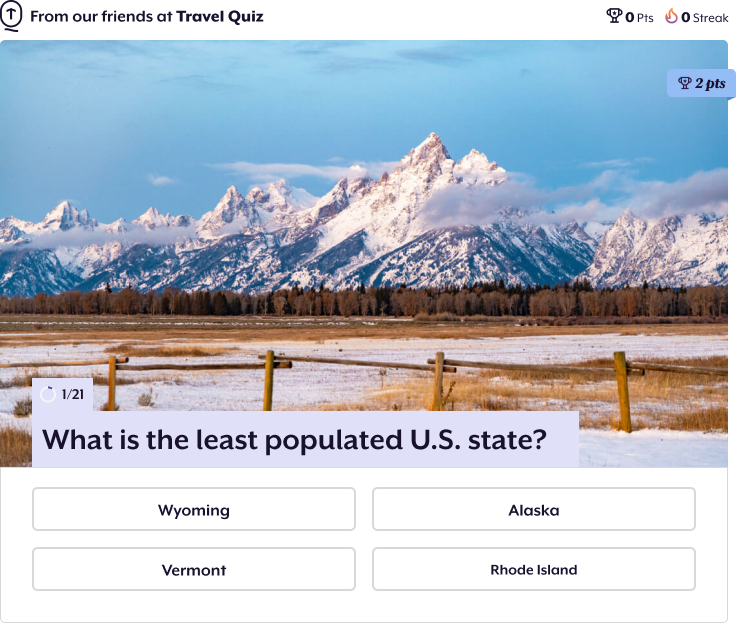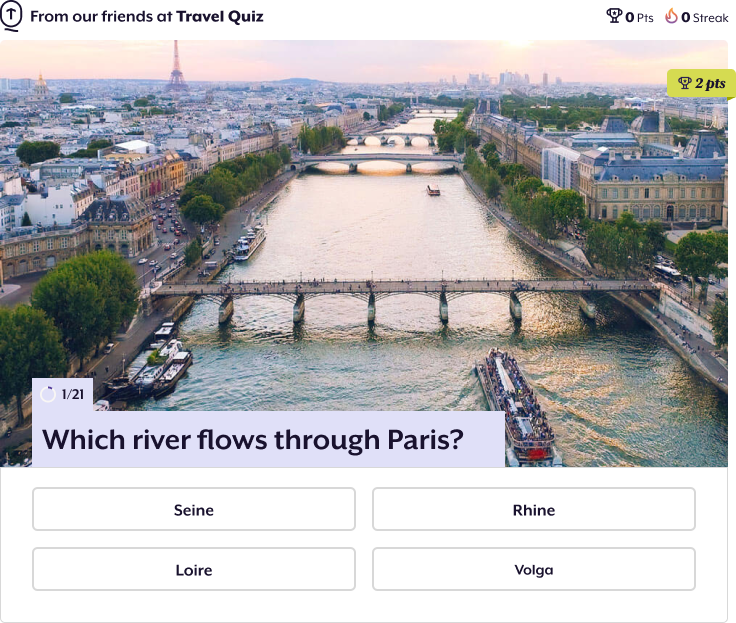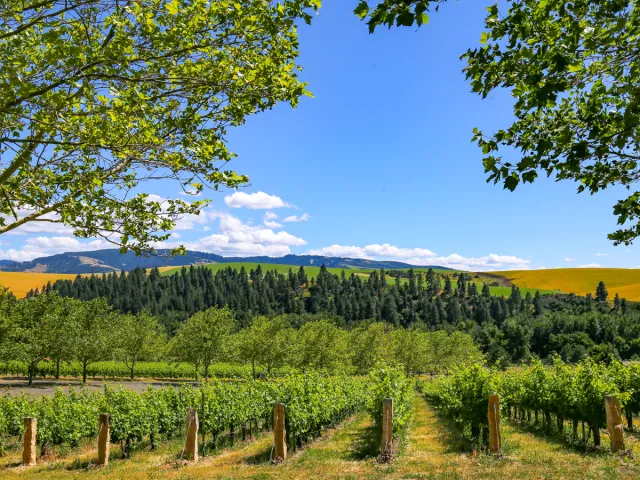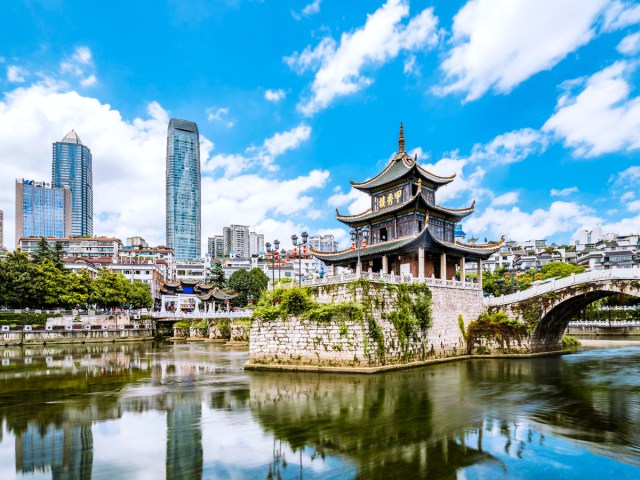From stunning natural wonders to incredible human-made structures, the United States contains some of the world’s most recognizable attractions. Each state is home to a slew of landmarks that reflect its unique history, culture, and natural beauty, while attracting millions of visitors each year. But if you had to pick the one landmark that your state is best known for, which one would you choose? Take a look at our picks below for the most iconic landmark in every state and see if you agree.
Alabama – USS Alabama Battleship Memorial Park

Launched in 1942, the USS Alabama played a key role in the Pacific campaign of World War II. The battleship was decommissioned in 1947 and set to be scrapped in 1962, but instead it was sold to the state of Alabama and turned into a museum that opened in 1965. At the USS Alabama Battleship Memorial Park in Mobile, visitors can explore 12 decks of the former warship along with a number of fascinating exhibits about its history. While several other sites could easily vie for the title of Alabama’s most iconic landmark, the USS Alabama is so popular that it has generated nearly a billion dollars of economic impact for the state.
Alaska – Denali
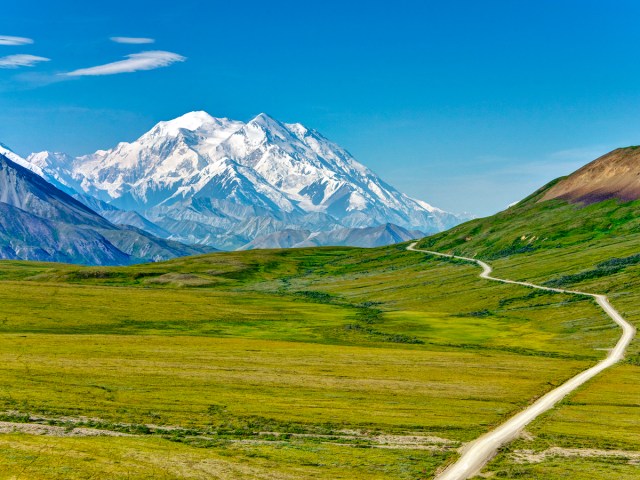
Known by the Indigenous name Denali and recognized federally as Mount McKinley, this natural Alaskan landmark is the highest peak in North America, reaching 20,310 feet above sea level. The mountain is part of Denali National Park and Preserve, located about an hour by sightseeing plane from Anchorage or four to five hours by car. The mountain is believed to have been formed 60 million years ago. The name Denali means “the tall one” in the Koyukon language.
Arizona – Grand Canyon
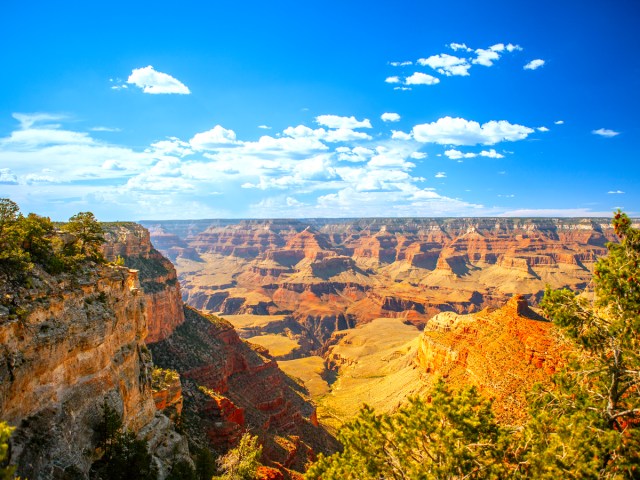
What landmark could we choose other than the one that lends Arizona its state nickname? The Grand Canyon — one of the Seven Natural Wonders of the World — measures 278 miles long, 18 miles across at the widest point, and descends a mile from the upper rim down to the Colorado River at its nadir. Archaeological findings suggest the region was inhabited as far back as 12,000 years ago, though it wasn’t until 1869 that the canyon became widely known thanks to a geological expedition by John Wesley Powell. The Grand Canyon was declared a national park in 1919, and today it welcomes close to 5 million annual visitors.
Arkansas – Hot Springs National Park
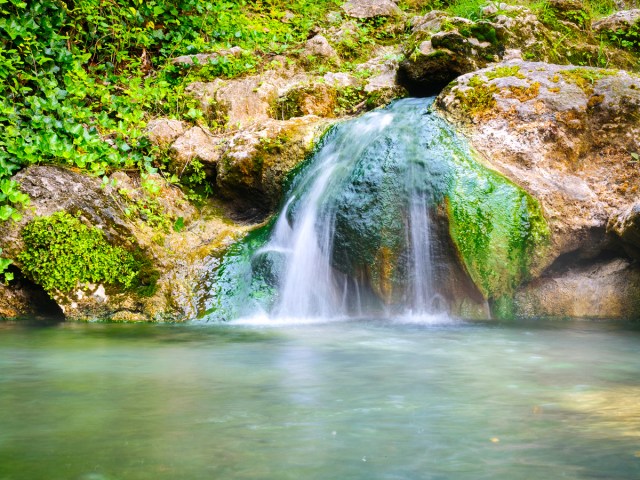
In the late 19th century, Arkansans began flocking to Bathhouse Row to take a dip in the relaxing baths containing natural spring water, which was purported to have healing properties. Today, there are eight bathhouse buildings that remain, dating from 1892 to 1923, including Buckstaff Bathhouse, which has been an active bathhouse since 1912. In 1921, Hot Springs was designated a national park, and it now attracts upwards of 2 million visitors annually.
California – Golden Gate Bridge
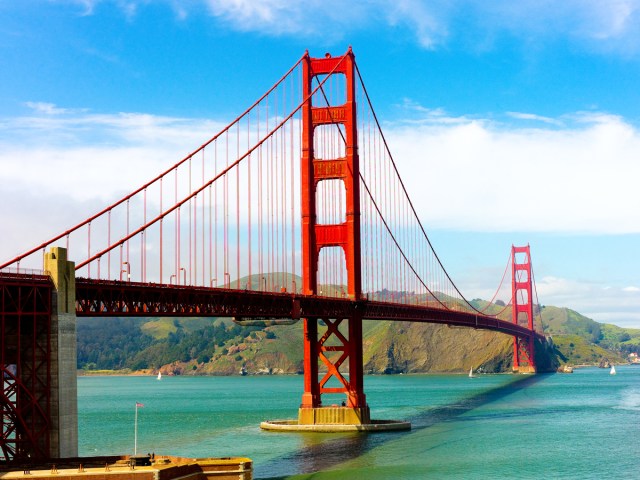
Among California’s many recognizable landmarks, the Golden Gate Bridge is arguably the most famous. More than 2.2 billion vehicles have traversed it since the bridge first opened on May 28, 1937. Connecting the city of San Francisco with Marin County to the north, the bridge was named for the Golden Gate Strait over which it spans. Its distinctive color has an official name: “International Orange.” The color was chosen because it blended better with the surrounding landscape than black and gray, but contrasted enough with the ocean and sky to ensure visibility for passing ships.
Colorado – Rocky Mountain National Park
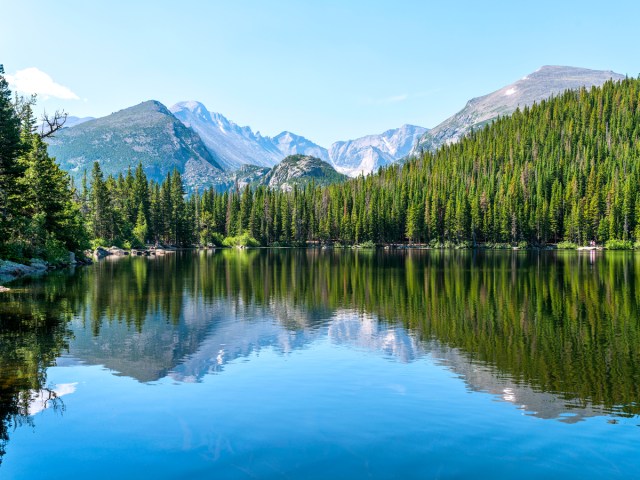
Where else would Rocky Mountain National Park be located than in the Rocky Mountain State? This 415-square-mile expanse northwest of Denver was declared a national park in 1915; today over 4.5 million parkgoers visit each year. There are more than 60 mountains throughout the park with peaks above 12,000 feet, the highest of which is Longs Peak (14,259 feet). John Wesley Powell — the first person on record to climb Longs Peak in 1868 — is the same man who helped popularize the Grand Canyon in 1869.
Connecticut – Mark Twain House and Museum
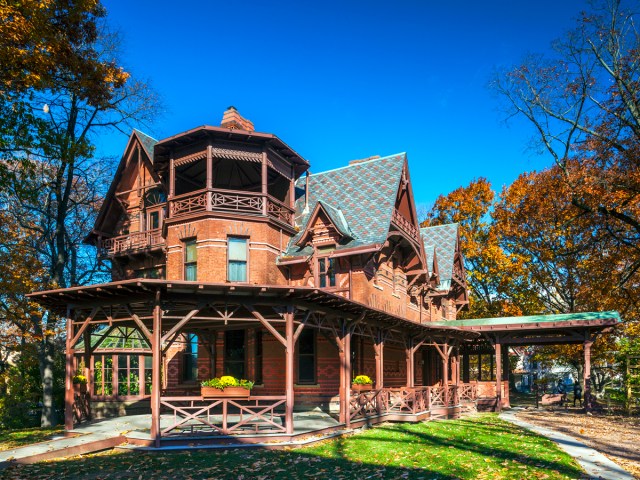
From 1874 to 1891, beloved American author Mark Twain called the city of Hartford, Connecticut, home. His restored house still stands today, welcoming visitors to explore the place where Twain and his family lived and where he wrote many of his most famous works, including Adventures of Huckleberry Finn and A Connecticut Yankee in King Arthur’s Court. The house was designated a National Historic Landmark in 1963, and an accompanying museum opened in 2003.
Delaware – New Castle Historic District
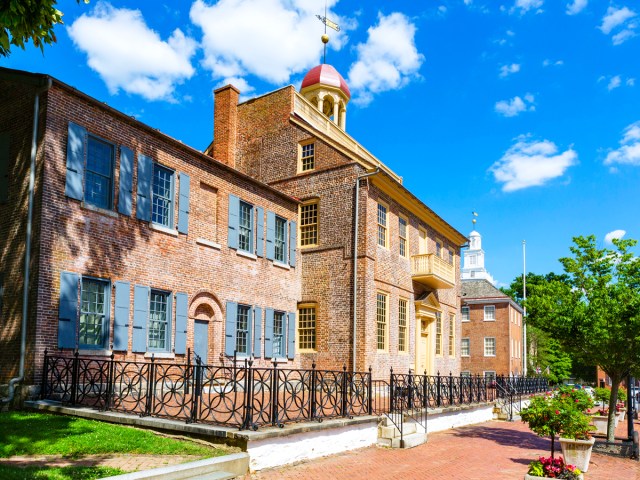
Originally settled by the Dutch in the 1650s, New Castle’s federally recognized historic district offers a fascinating glimpse into the early years of America’s first state. Here, you’ll find centuries-old buildings such as Old New Castle Courthouse, which acted as Delaware’s seat of government until 1777, and the Dutch House, a 1690 residence that’s among the oldest buildings in the state.
Florida – Walt Disney World
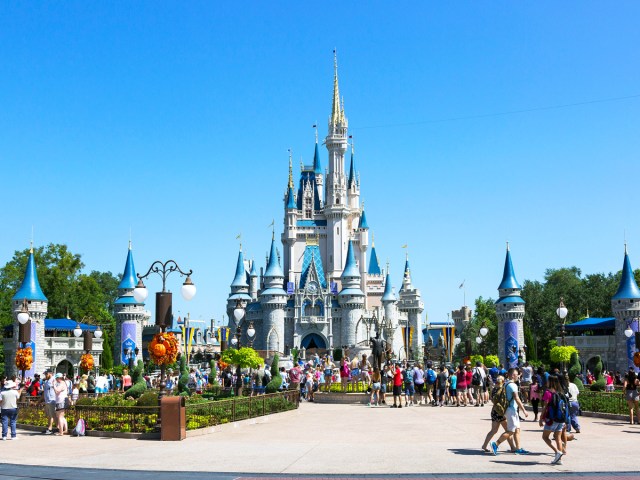
The “Most Magical Place on Earth” also happens to be the most iconic landmark in the Sunshine State. Walt Disney World first opened its doors on October 1, 1971, and the park was an instant hit. Its majestic centerpiece, Cinderella Castle, stands 189 feet tall and is based on a real Bavarian castle called Neuschwanstein. These days, Disney’s Magic Kingdom Theme Park at Walt Disney World is the world’s most-visited theme park, with an estimated 17.25 million guests entering the gates in 2023 alone.
Georgia – Savannah Historic District
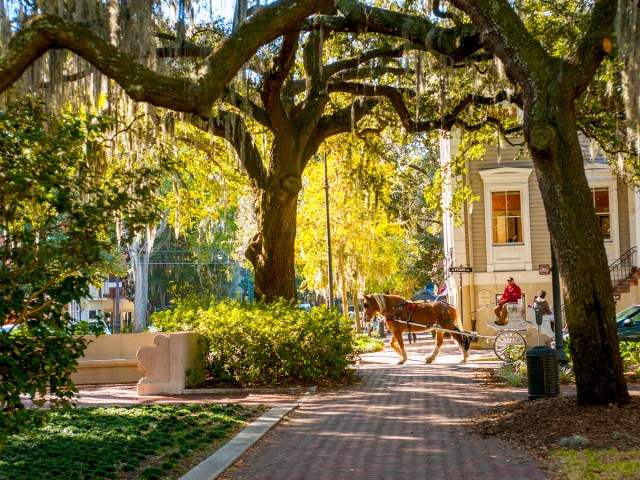
The Savannah Historic District blends colorful architecture, famous forts, and rich culture over the course of 23 gorgeous city blocks. This district’s gridlike layout dates to 1733, when James Oglethorpe planned the Georgia colony. Many of the district’s historic homes date to the 18th and 19th centuries, helping Savannah earn its designation as a National Historic Landmark District in 1966. Popular attractions throughout the district include the bustling City Market and the 26-acre Forsyth Park, the latter of which contains an oft-photographed fountain dating to 1858.
Hawaii – Pearl Harbor National Memorial
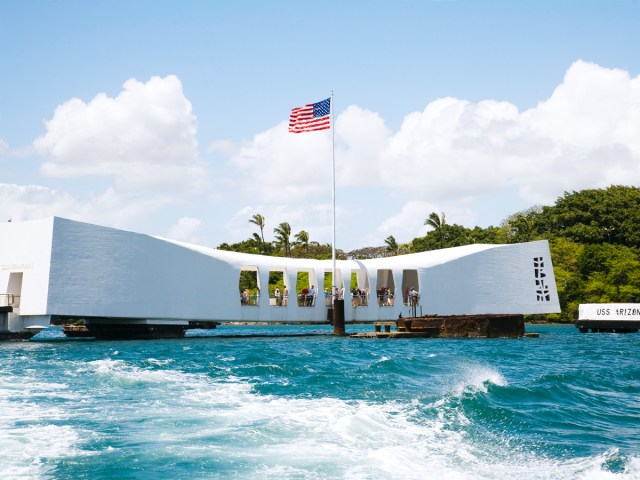
Pearl Harbor National Memorial commemorates the devastating attack on the U.S. military base that occurred on December 7, 1941, an event that led to America officially joining World War II. Today, the memorial serves as a somber reminder of those who made the ultimate sacrifice. Located in Honolulu on the island of Oahu, the memorial welcomes over 2 million visitors each year, making it the most-visited attraction on the Hawaiian islands. The most popular tour takes visitors on a quick boat ride to the USS Arizona Memorial, a gleaming white concrete-and-steel structure built atop the sunken battleship.
Idaho – Shoshone Falls
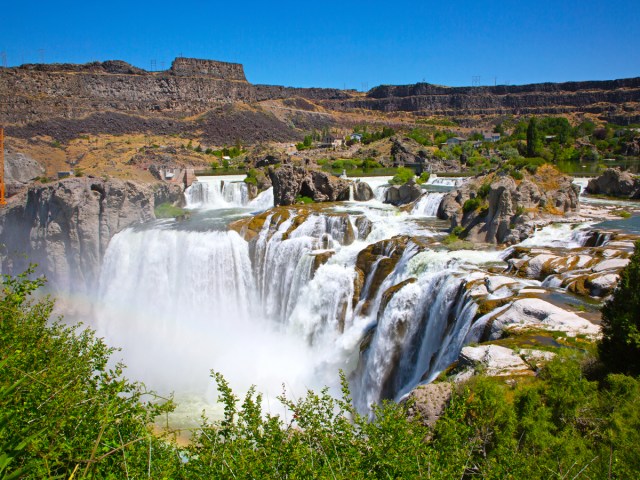
Shoshone Falls is often called the “Niagara of the West,” but at 212 feet tall and 900 feet wide, the falls are actually higher than Niagara Falls. Located about a two-hour drive southeast of Boise, the falls are named for the Indigenous Shoshone peoples who inhabited the region long before European settlers arrived. Many consider the spring and early summer to be the best time to visit, as water flows are highest due to snowmelt from the surrounding area.
Illinois – Willis Tower
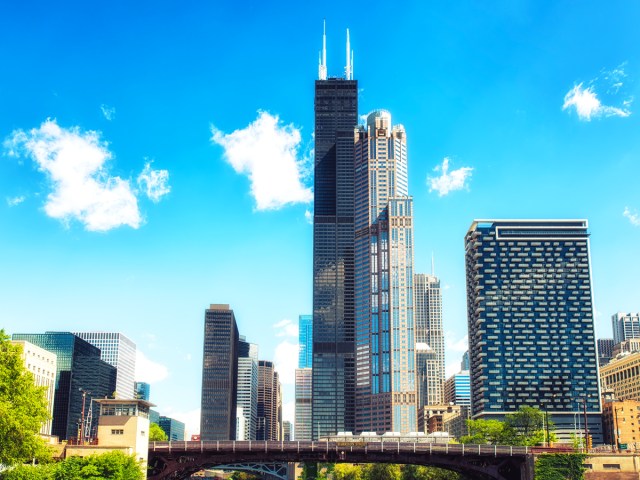
The Willis Tower, formerly known as the Sears Tower, rises above Chicago’s iconic skyline. This 1,450-foot-tall structure, completed in 1973, was once the world’s tallest building, before eventually losing the title to Malaysia’s Petronas Twin Towers in 1996. Even still, Willis Tower remains the 12th-tallest building in the world, and the third-tallest in North America. The Skydeck observation area on the 103rd floor offers unobstructed views of the Windy City and Lake Michigan — and as far away as Indiana, Wisconsin, and Michigan on a clear day.
Indiana – Indianapolis Motor Speedway

Indianapolis Motor Speedway is home to the Indianapolis 500, one of the most prestigious events in racing. The 2.5-mile racetrack was built in 1909 and hosted the first Indy 500 in 1911. Its official seating capacity is 235,000, making it the world’s largest stadium by its overall permanent capacity, according to Guinness World Records. The 250-acre site also features a museum dedicated to racing.
Iowa – Iowa State Capitol

The Iowa State Capitol in Des Moines is unique for being the only U.S. Capitol building with five domes. Its largest dome is gilded with a layer of 23.75-karat gold, which has been reapplied five times during the building’s existence. The building stands 275 feet tall and covers 330,000 square feet of floor space, with 109 rooms inside. There are several memorials located on the Capitol grounds as well, including one dedicated to the Iowans who fought in the Civil War, plus a statue dedicated to Abraham Lincoln and his son.
Kansas – Monument Rocks
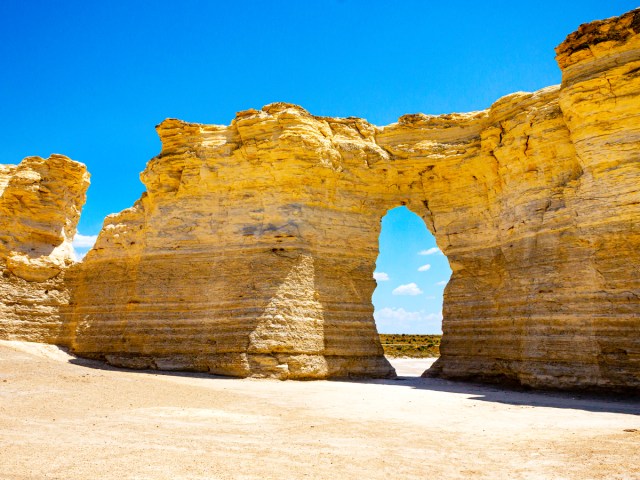
In 1968, the Monument Rocks were designated the first National Natural Landmark in Kansas. The curious chalk formations are located on private property between Scott City and Oakley, though the property owners allow any visitors to come and bask in their glory. The rocks — which tower 50 feet above the ground and descend 300 feet into the earth below — are believed to have formed in the late Cretaceous Period some 66 million to 100 million years ago.
Kentucky – Mammoth Cave National Park
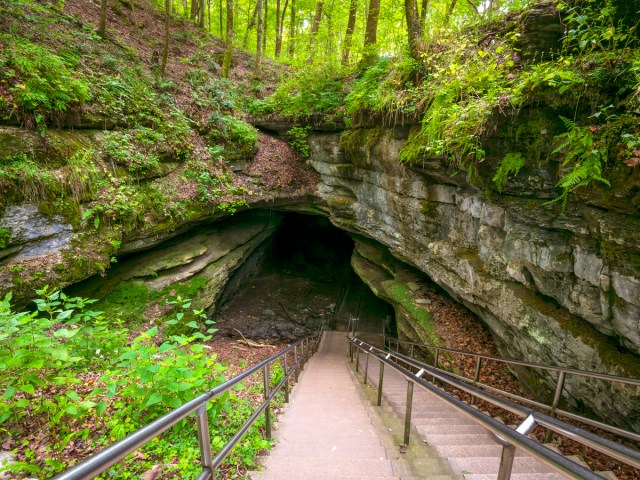
Mammoth Cave National Park is not only Kentucky’s sole national park, but also the world’s longest known cave system, with over 400 miles explored to date. Much of the cave was originally explored by a formerly enslaved person named Stephen Bishop, whose legacy is celebrated throughout the park. Today, visitors can explore roughly 10 miles of the cave system on daily guided tours. Mammoth Cave and portions of the surrounding area were designated a national park in 1941 and a UNESCO World Heritage Site in 1981.
Louisiana – French Quarter of New Orleans
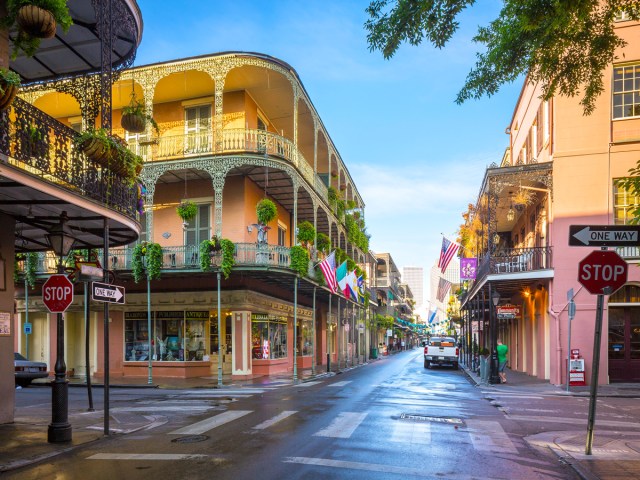
Jean Baptiste Le Moyne de Bienville founded the city of New Orleans in 1718. The original grid layout later became known as Vieux Carré or the Old Square — today, it’s more commonly known as the French Quarter. One of the top 10 most-visited tourist destinations in the U.S., the French Quarter is home to lively Bourbon Street, stunning Jackson Square (which contains the 19th-century St. Louis Cathedral), and many opulent townhouses dating to the 18th and 19th centuries.
Maine – Acadia National Park
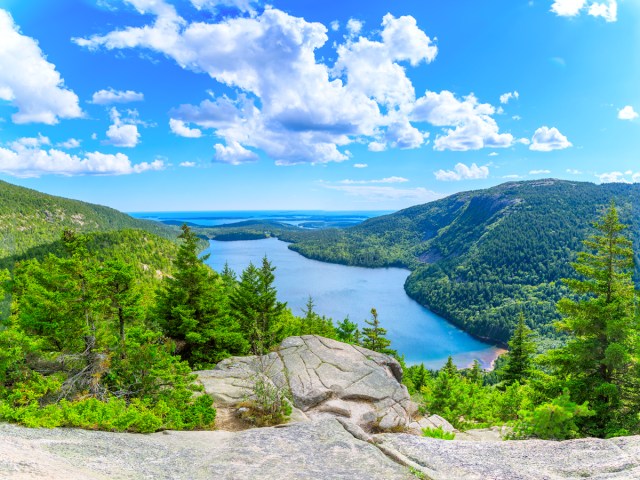
The first national park established east of the Mississippi River, Acadia National Park is located just outside the charming town of Bar Harbor on Maine’s rugged Atlantic coast. Spanning more than 47,000 acres, Acadia became a national park on January 19, 1929. Today, it attracts over 4 million visitors annually, many of whom drive up to Cadillac Mountain to catch the first sunrise of the day in the U.S., which occurs between October 7 and March 6 (during other times of year, the first sunrise happens on Mars Hill or at West Quoddy Head). The peak has an elevation of 1,530 feet, making it the tallest mountain on the Eastern Seaboard.
Maryland – Fort McHenry National Monument
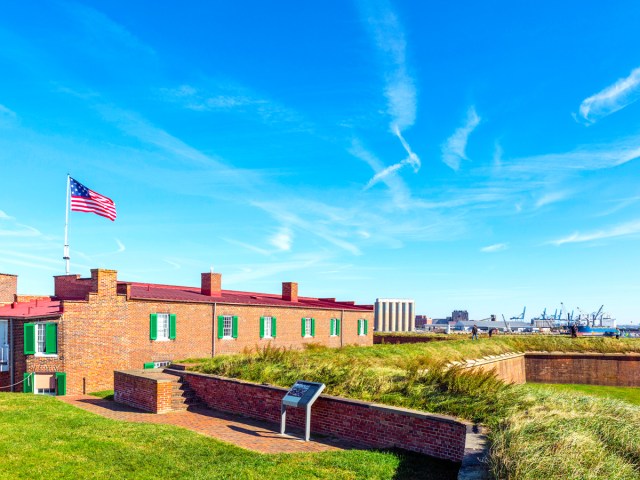
Fort McHenry played a key defensive role during the Battle of Baltimore, which occurred from September 13 to 14, 1814. The valiant effort of the troops at Fort McHenry inspired Francis Scott Key to write the lyrics to “The Star-Spangled Banner,” which later became the national anthem. Today, Fort McHenry National Monument honors and chronicles those important events in the nation’s history. The site covers over 43 acres and includes the fort itself, two memorial tree groves, and more than 16,000 historical artifacts.
Massachusetts – Boston Freedom Trail

The Freedom Trail winds for 2.5 miles through 16 significant sites related to early American history. One of these sites is Boston Common — America’s oldest public park, which was established in 1634. There’s also the Old State House, which dates to 1713 and is the oldest building in Boston. Another important stop along the trail is the Granary Burying Ground, which contains the resting places of Samuel Adams, John Hancock, Crispus Attacks, and other notable early Americans.
Michigan – Mackinac Bridge

Located at the northern tip of Michigan’s “glove,” the Mackinac Bridge connects the state’s Lower and Upper Peninsulas. Opened in 1957, the bridge spans the Straits of Mackinac, which connect Lake Huron and Lake Michigan, two of the five Great Lakes. “Mighty Mac,” as it’s known by locals, has a total suspended length of 12,826 feet, making it the longest suspension bridge in the Western Hemisphere and seventh-longest in the world. The bridge’s total length is 26,372 feet, and 5 million vehicles cross it annually.
Minnesota – Mall of America

Though the Cathedral of St. Paul and the Minneapolis Sculpture Garden were contenders, we had to go with the largest mall in the nation as Minnesota’s most iconic landmark. The Mall of America sits on the former site of Metropolitan Stadium in Bloomington, which once served as the home of baseball’s Minnesota Twins and football’s Minnesota Vikings. The mall opened on August 11, 1992, and now welcomes around 32 million people each year, generating $2 billion in economic impact for the state. It contains over 5 million square feet of retail space with more than 500 stores, as well as an indoor theme park.
Mississippi – Elvis Presley Birthplace

The “King of Rock and Roll” was born on January 8, 1935, in Tupelo, Mississippi. Today, the Elvis Presley Birthplace honors the legendary singer’s life and legacy. It contains the two-room house where Elvis was born, as well as the church that Elvis and his family once attended. The landmark is part of the larger Mississippi Blues Trail, which includes other notable sites such as B.B. King’s birthplace in Berclair and Robert Johnson’s birthplace in Hazelhurst.
Missouri – Gateway Arch
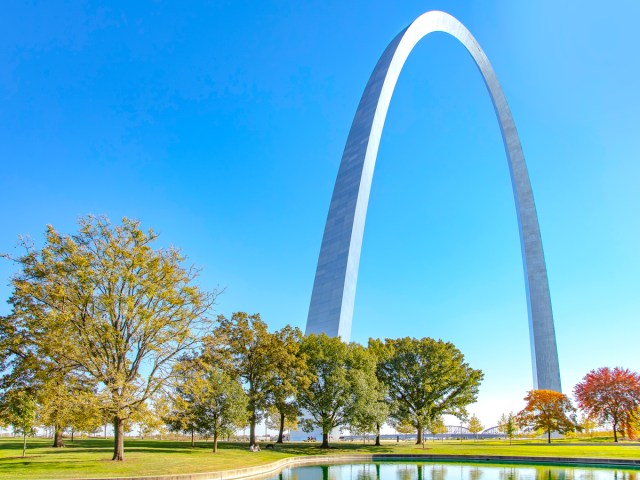
Since opening in 1965, the 630-foot-tall Gateway Arch has been the tallest monument of any kind in the United States. The sweeping, stainless steel arch commemorates Thomas Jefferson’s vision for westward expansion and was designed by legendary Finnish American architect Eero Saarinen. The Gateway Arch and the surrounding landscape were rededicated as a national park on February 22, 2018. Covering 91 acres of land, it is currently America’s smallest national park.
Montana – Glacier National Park

Montana is a state famous for its breathtaking landscapes, and nowhere is that more evident than in Glacier National Park, located in northern Montana along the border of Alberta, Canada. Established back in 1910, the park is home to 26 glaciers today, though, sadly, that number continues to decline due to climate change. The tallest of the park’s 175 peaks is Mount Cleveland, which sits at 10,448 feet above sea level. The most popular drive through the park is Going-to-the-Sun Road, which passes along the Continental Divide.
Nebraska – Chimney Rock

Nebraska’s most iconic landmark has long been a marker on the Midwestern horizon. Chimney Rock is estimated to be 325 feet tall from its tip to its base, with the spire itself measuring around 120 feet. The rock formation dates to the Oligocene Age, an estimated 23 million to 33.9 million years ago. It became famous during the 19th century as settlers emigrated west on the Oregon Trail, though the area’s Indigenous peoples considered it a sacred site long before that. Chimney Rock was declared a National Historic Site in 1956.
Nevada – Las Vegas Strip
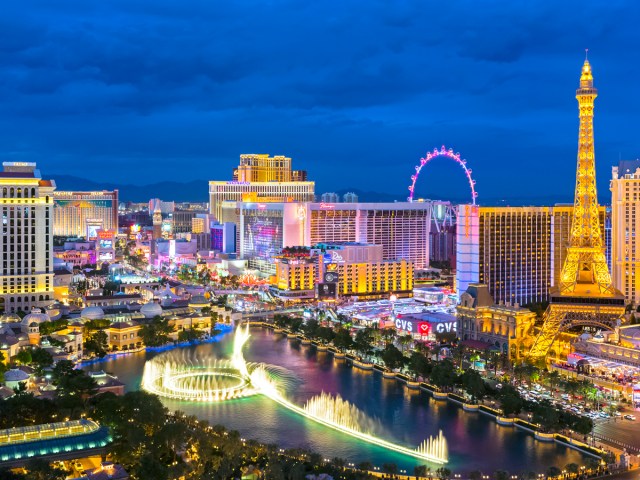
Though it’s commonly associated with Sin City, the Las Vegas Strip is technically located in the adjacent city of Paradise. Nonetheless, visitors from all over the world are drawn to the iconic Strip, marked by the famous “Welcome to Fabulous Las Vegas Nevada” sign, designed by commercial artist Betty Willis in 1959. The Strip extends approximately 4 miles and contains many legendary Vegas institutions, from Caesars Palace to the MGM Grand and the Bellagio. The latter is known for its opulent fountain show that shoots water as high as 460 feet into the air.
New Hampshire – Mount Washington

At 6,288 feet, Mount Washington is the highest peak in the northeastern United States. It’s located in northern New Hampshire, roughly 2.5 hours by car from the capital of Concord. Back in April 1934, the observatory recorded a wind speed of 231 mph, which was the world’s fastest recorded wind speed at the time. In 1996, a 253 mph cyclone in Australia took the record, though the 1934 reading on Mount Washington still remains the second-fastest wind speed ever recorded. One of the most popular ways to visit is by riding the historic Mount Washington Cog Railway to the summit.
New Jersey – Thomas Edison National Historical Park
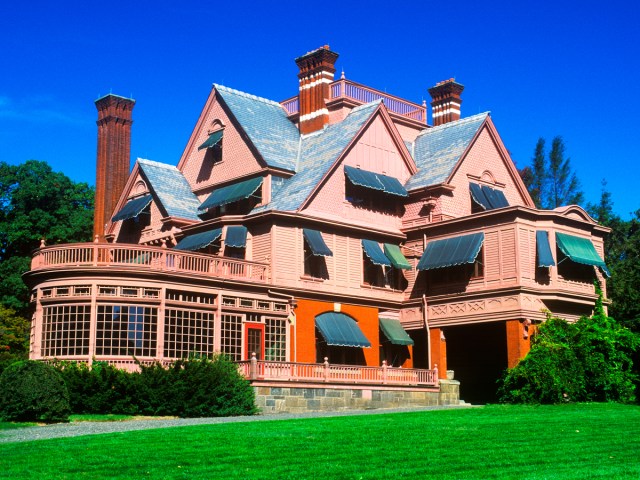
One of America’s greatest inventors hailed from the Garden State. The Thomas Edison National Historical Park in West Orange contains Edison’s former laboratory and home. This was the world’s first industrial research laboratory when it opened in 1887, and it was here that Edison conceived of inventions such as the motion picture camera. In addition to the lab, visitors can tour Edison’s 29-room Glenmont mansion, which contains a vast collection of art, china, and vintage Persian rugs.
New Mexico – Taos Pueblo

Located 90 minutes by car from the capital of Santa Fe, Taos Pueblo has been continuously inhabited for over 1,000 years. Many of the main buildings were constructed between 1000 and 1450 CE from adobe — sun-dried bricks made by mixing earth, water, and straw. Taos Pueblo was inhabited by the Tiwa long before European explorers arrived in the 1500s, and today it is a National Historic Landmark and a UNESCO World Heritage Site.
New York – Statue of Liberty
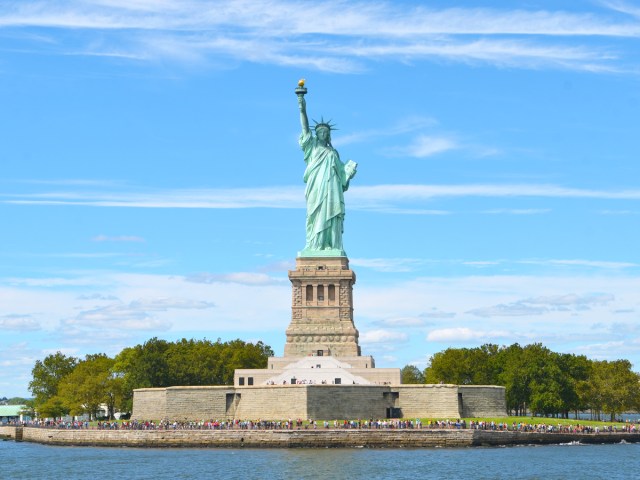
New York is home to some of America’s most iconic landmarks, but in our view, Lady Liberty takes the crown. Towering over New York Harbor, the statue was a gift from France to the United States, and it was dedicated by President Grover Cleveland on October 28, 1886. Fréderic-Auguste Bartholdi sculpted the Statue of Liberty with the help of engineer Alexandre Gustave Eiffel. It stands 305 feet and 1 inch tall. Inside the pedestal, the statue, which served as a symbol of hope and opportunity for those immigrating to America, features a famous poem by Emma Lazarus titled “The New Colossus.” It reads, in part, “Give me your tired, your poor, / Your huddled masses yearning to breathe free.”
North Carolina – Biltmore Estate
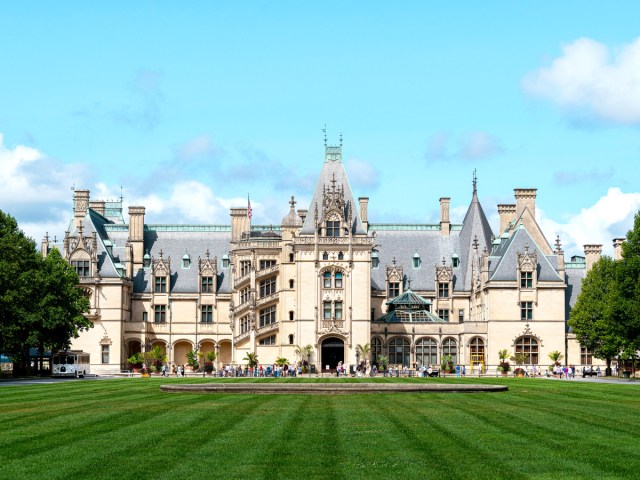
America’s largest home was built between 1889 and 1895 as the residence of George Vanderbilt, of the wealthy Vanderbilt family. The Biltmore Estate in Asheville, North Carolina, spans 175,000 square feet and features 250 rooms, including 35 bedrooms, 43 bathrooms, and 65 fireplaces. Landscape designer Frederick Law Olmsted, who was responsible for Central Park in New York City, designed the estate’s grounds and gardens, which are set on 8,000 acres. Inside, the mansion contains a museum-worthy art collection, which includes “Belle-Île, le chenal de Port-Goulphar,” an 1886 seascape by Claude Monet.
North Dakota – Theodore Roosevelt National Park
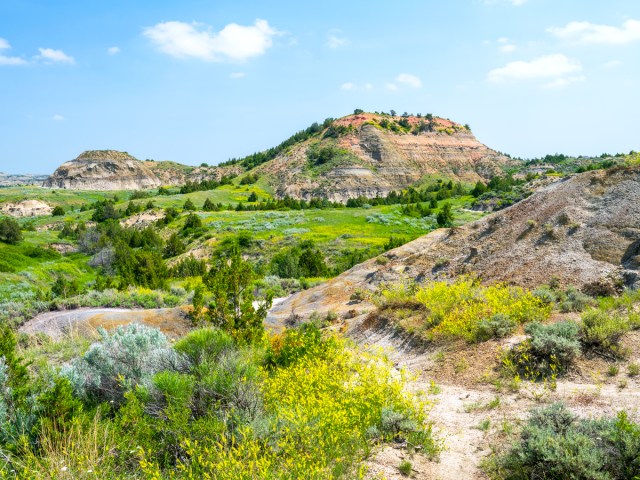
The only U.S. national park named after a person, Theodore Roosevelt National Park is located in the small town of Medora in the western part of North Dakota. Medora was once a favorite destination for Roosevelt, and the town will soon be the site of his future presidential library, opening in 2026. The park was first established as a memorial park in 1947 and later became a national park in 1978. Here, you’ll find plenty of wild, untamed landscapes and free-roaming wildlife, including bison, prairie dogs, and wild horses.
Ohio – Rock and Roll Hall of Fame
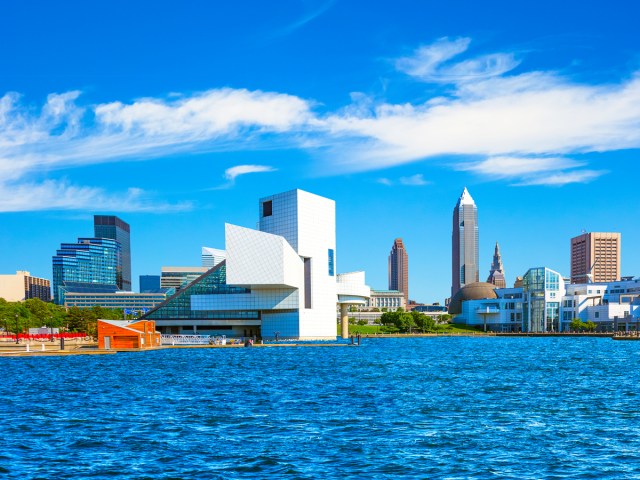
Architect I. M. Pei designed Cleveland’s Rock and Roll Hall of Fame, famous for its glass pyramidal exterior that spans 150,000 square feet. Opened in 1985, the museum sits along the shores of Lake Erie and offers self-guided tours of exhibits detailing the history of rock music. Enshrinement in the Hall is considered to be one of the most prestigious awards in music. The inaugural 1986 Hall of Fame class included legendary acts such as Chuck Berry, James Brown, and Elvis Presley.
Oklahoma – Oklahoma City National Memorial and Museum
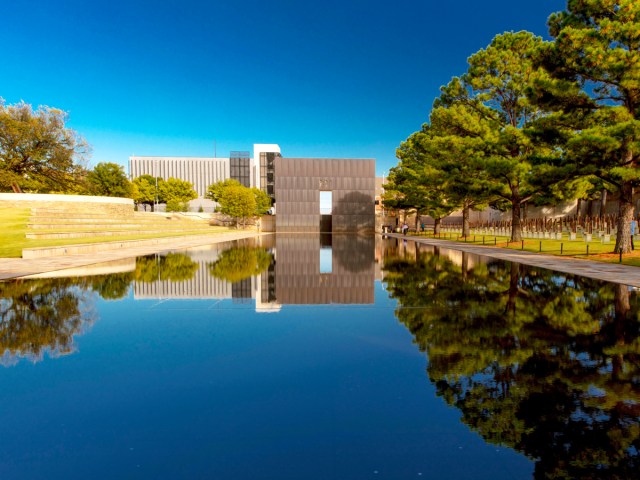
On April 19, 1995, a tragic bombing took place in Oklahoma City, and today, the Oklahoma City National Memorial & Museum honors the memories of those who died. Formally dedicated in 2000, this somber memorial includes a stunning reflecting pool, which features two large bronze gates at either end called the Gates of Time. One gate is etched with 9:01, which is one minute before the bombing took place and is meant to represent innocence. The other gate is etched with the time 9:03, symbolizing the start of the healing process.
Oregon – Crater Lake National Park
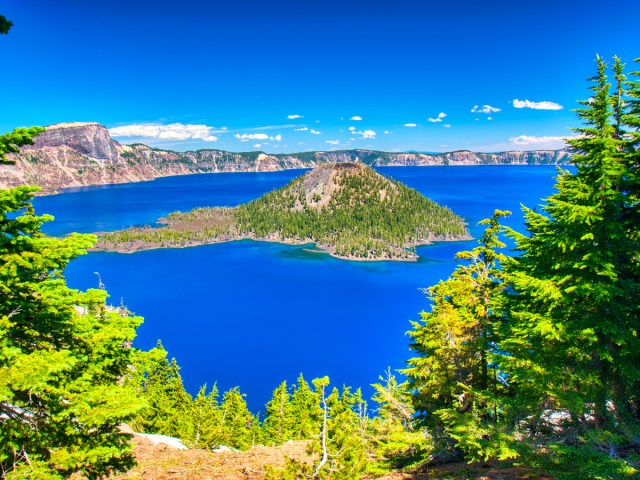
The namesake of Crater Lake National Park is the deepest lake in the U.S., descending to depths of 1,943 feet. Formed approximately 7,700 years ago by a volcanic eruption that later filled with water, the lake and the surrounding area were designated a national park on May 22, 1902. Visitors are drawn to the lake for its stunning blue color, which is due, in part, to a lack of sediment — Crater Lake is fed entirely by rainfall and snowmelt from the surrounding region.
Pennsylvania – Independence Hall
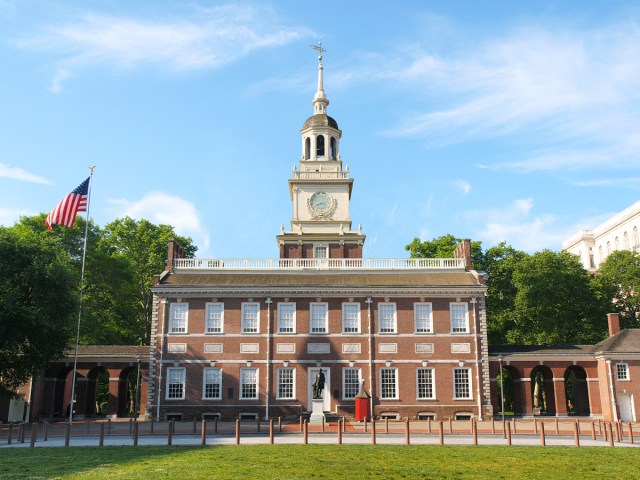
Independence Hall is where the Founding Fathers debated and adopted both the Declaration of Independence and the U.S. Constitution. The building is part of a larger complex in Philadelphia where American democracy was born. Just a few steps away from Independence Hall, you’ll find the Liberty Bell, which hung in the steeple of Independence Hall from 1753 to 1777. Both Independence Hall and the Liberty Bell became a part of Independence National Historical Park on July 4, 1956.
Rhode Island – The Breakers
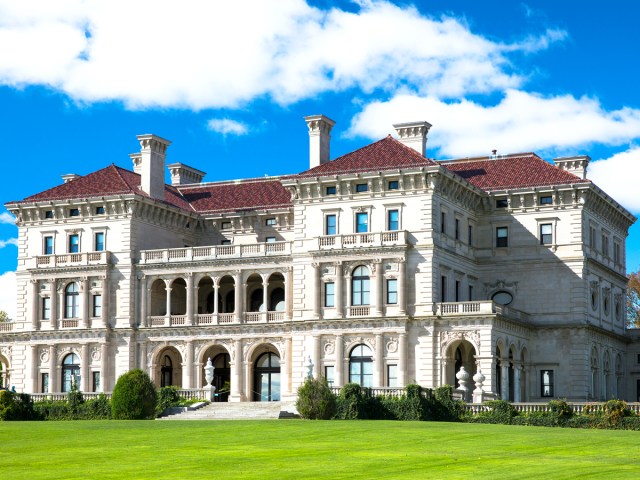
Newport, Rhode Island, is home to a series of stunning oceanside Gilded Age mansions, the most famous of which is the Breakers, the former home of Cornelius Vanderbilt II. Completed in 1895 for a cost of $12 million (around $450 million today), it was built to replace an older wooden house that was destroyed by fire. The new mansion was built from steel, brick, and limestone to ensure its durability. It has 70 rooms and is located alongside the scenic Newport Cliff Walk, a popular National Recreational Trail along the Atlantic coast of Rhode Island.
South Carolina – Fort Sumter National Monument
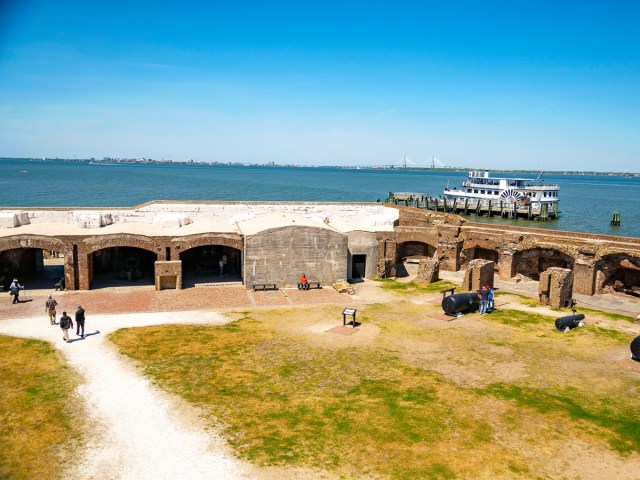
The U.S. Civil War began at Fort Sumter on April 12, 1861. It was here that Confederate soldiers fired on Union troops, kicking off the deadliest conflict in American history. Construction on the fort began back in 1829, and it was built near Charleston Harbor along the Atlantic coast to protect against potential foreign attacks. The fort continued to serve a military purpose until it was decommissioned in 1947, and the land was transferred over to the National Park Service the following year so it could be opened to visitors.
South Dakota – Mount Rushmore
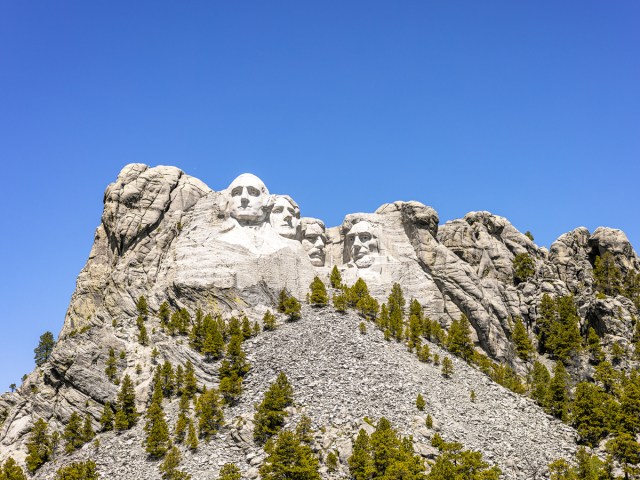
One of America’s most famous landmarks is located in the Black Hills of South Dakota. Mount Rushmore was designed by sculptor Gutzon Borglum and constructed from 1927 to 1941. It features the giant carved faces of four U.S. presidents: George Washington, Thomas Jefferson, Abraham Lincoln, and Theodore Roosevelt, each chosen for their significant contributions to the nation’s development and history. Prior to his death, Borglum began work on a secret Hall of Records behind Lincoln’s head that could house important documents such as the Declaration of Independence, though the room was never completed.
Tennessee – Great Smoky Mountains National Park
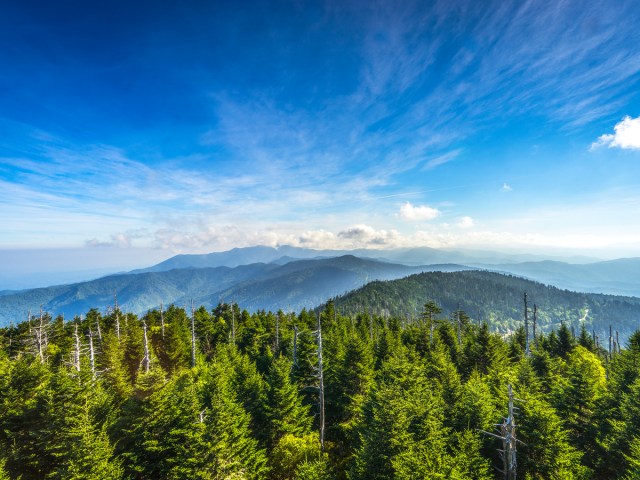
Great Smoky Mountains National Park — America’s most-visited national park — was officially designated in 1940. Though the park is also located in North Carolina, the most popular entrance is outside Gatlinburg, Tennessee, about a 45-minute drive from Knoxville. The park is full of black bears, expansive forests, and incredible hiking opportunities, including a segment of the Appalachian Trail. One of the more popular scenic drives in the park is along Newfound Gap Road, a 33-mile-long route that takes roughly an hour to drive and allows visitors to experience all of the different types of terrain that the park has to offer.
Texas – The Alamo
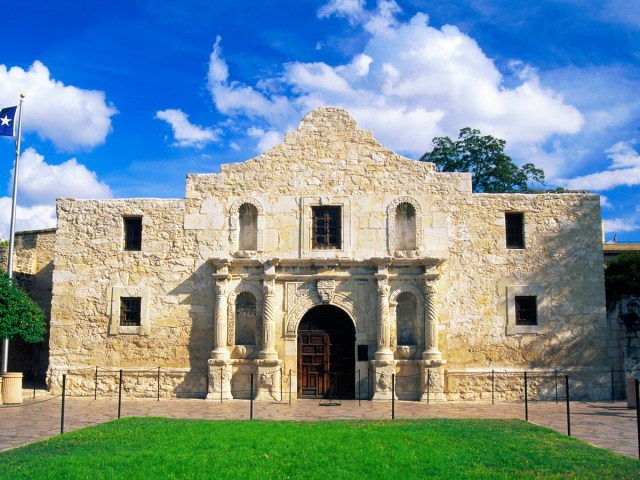
The popular phrase “Remember the Alamo” comes from a Catholic mission in San Antonio that was built by Spanish settlers in 1718. The Alamo was famously defended during the Texas Revolution in an 1836 battle, in which men such as Davy Crockett took up arms against Mexican troops led by General Santa Anna. It was designated a National Historic Landmark in 1960 and remains the most-visited attraction in the Lone Star State.
Utah – Delicate Arch
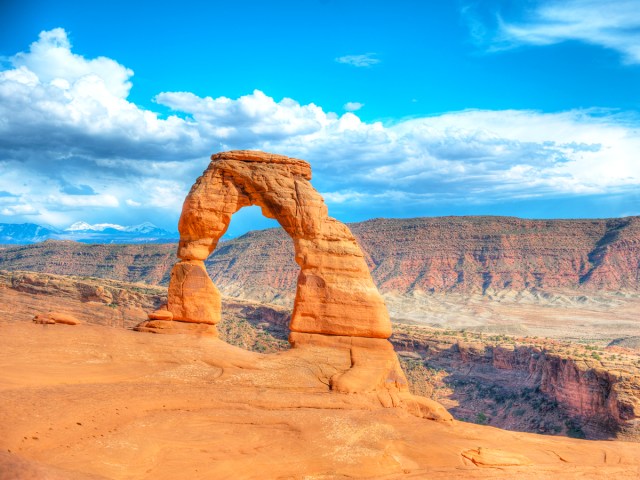
Arches National Park contains over 2,000 of its namesake stone arches, though none is more famous than Delicate Arch. This name for this stunning natural wonder — with an opening that measures 46 feet high and 32 feet wide — was coined in a 1934 article describing the landmark as “the most delicately chiseled arch in the entire area.” More than 1.5 million visitors come to Arches each year, many of whom walk the 3-mile trail in order to gaze upon Delicate Arch with their own eyes.
Vermont – Bennington Battle Monument
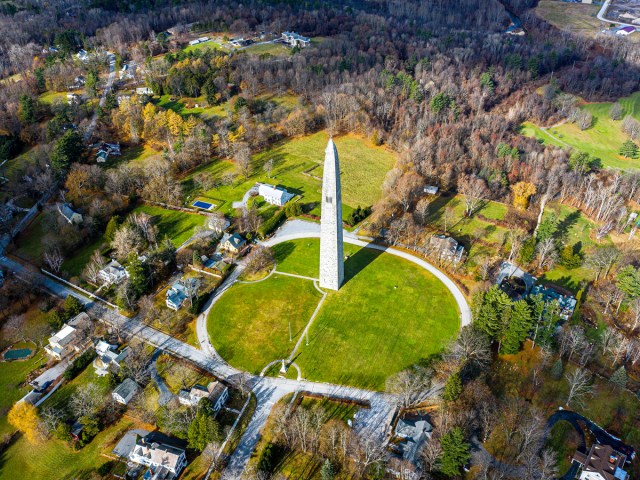
The Bennington Battle Monument chronicles the Battle of Bennington, a pivotal Revolutionary War battle fought on August 16, 1777, resulting in a decisive victory for the Revolutionary militia. Ground was broken for the monument on the 100th anniversary of the battle, and the giant obelisk at its center was dedicated in 1891. The obelisk measures 306 feet tall and weighs approximately 19 million pounds.
Virginia – Arlington National Cemetery

The country’s most famous burial ground, Arlington National Cemetery is a large military cemetery located in Arlington, Virginia, roughly a 20-minute walk from the Lincoln Memorial in Washington, D.C. One of the most notable sites is the Tomb of the Unknown Soldier, a crypt meant to honor any U.S. military whose remains were never identified. Arlington also contains the eternal resting spots of two U.S. presidents: John F. Kennedy and William Howard Taft.
Washington – The Space Needle
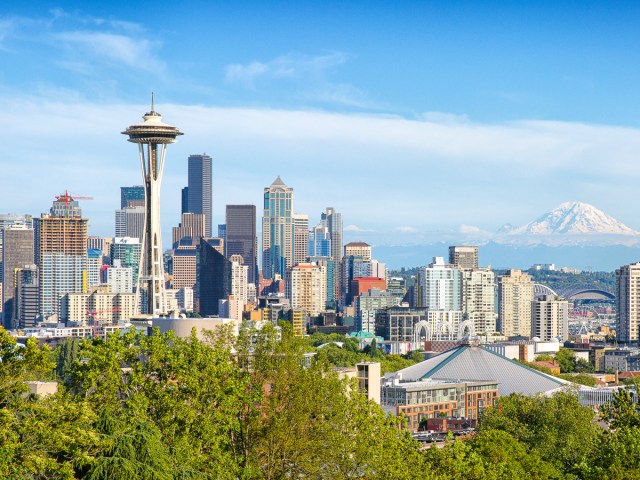
The iconic 605-foot-tall Space Needle in downtown Seattle is unlike any other building in America. Built for the 1962 Seattle world’s fair, the Space Needle opened on the first day of the celebration, which had a “Century 21” theme dedicated to the dawn of the Space Age. The all-glass eatery at the top of the Space Needle is the second rotating glass restaurant ever built in the U.S. The building also features a stunning observation deck that includes the world’s first and only revolving glass floor.
West Virginia – New River Gorge Bridge
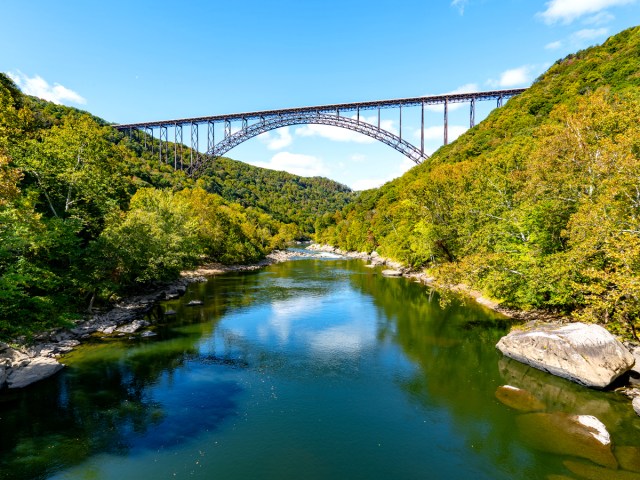
At 3,030 feet in length with a height of 876 feet, the New River Gorge Bridge is the longest steel span bridge in the Western Hemisphere and third-highest bridge in the U.S. The bridge is located in Fayetteville, approximately 70 minutes by car from the capital of Charleston, and it turned what used to be a 40-minute drive around the gorge into a trip that now takes less than one minute. In 2020, New River Gorge was declared the country’s newest national park.
Wisconsin – Lambeau Field
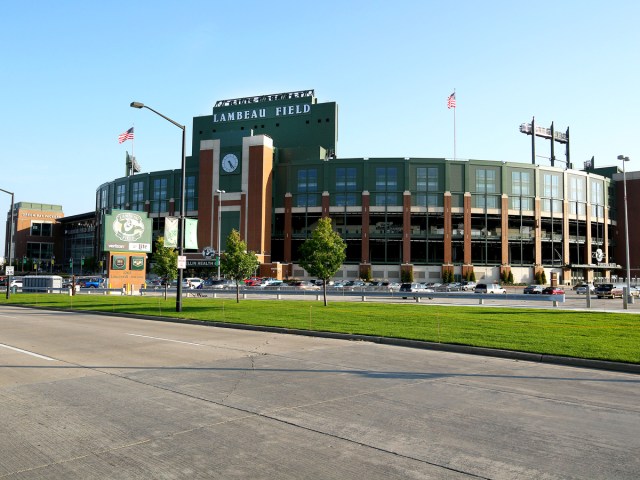
Lambeau Field has served as the home of the NFL’s Green Bay Packers since 1957. When the team got its start, single ticket prices originally ranged from $2.25 to $4.75 (around $25 to $54 today). The stadium has been the site of seven of the Packers’ 13 championship victories. It was given its current name in 1965 to honor Packers coach Curly Lambeau, who passed away that year. Lambeau Field is located in the city of Green Bay in the eastern part of the state.
Wyoming – Yellowstone National Park
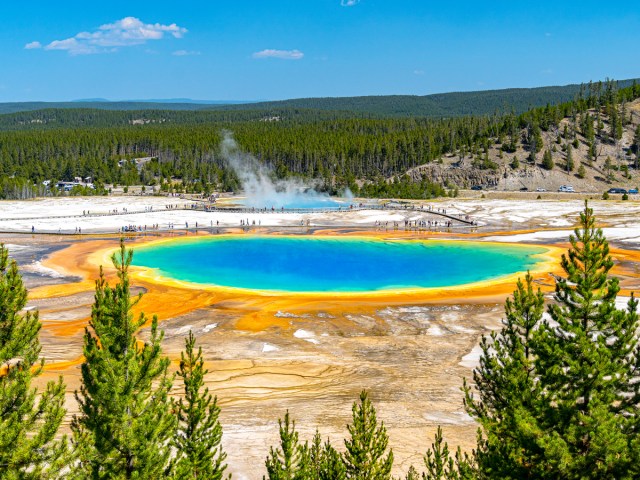
On March 1, 1872, Yellowstone became the country’s very first national park. Though portions of the park are located in Idaho and Montana, Yellowstone is primarily contained in Wyoming. The park is home to some of America’s most iconic natural landmarks, including the Old Faithful geyser, which regularly erupts every one to 1.5 hours. You’ll also find the multicolored Grand Prismatic Spring, plus a variety of wildlife from moose to elk and bison roaming one of America’s — and the world’s — most famous national parks.
More from our network
Daily Passport is part of Inbox Studio, which publishes content that uplifts, informs, and inspires.

